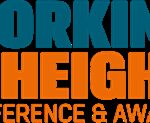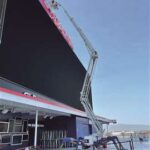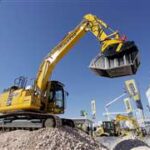Buying a boom lift is great—if you’ve got deep pockets and a full calendar of jobs.
But for many businesses, contractors, or special projects, renting makes way more sense.
Still, before you throw down your credit card, you need to know:
What exactly am I getting for my rental dollars?
Let’s lift the curtain (pun intended) on what renting a boom lift really offers—and why it might be the smartest move you make this year.
🎯 Why People Rent Boom Lifts
✅ Short-term needs: You only need the lift for a few days or weeks.
✅ Budget-friendly: No massive upfront cost.
✅ Access to newer models: Use the latest tech without buying it.
✅ No maintenance headaches: Repairs and servicing = rental company’s problem.
✅ Flexibility: Need a 45-foot articulating boom today and a 125-foot telescopic next month? Renting makes it easy.
In short:
Renting = Maximum access, minimum commitment.
💵 How Much Does It Cost to Rent a Boom Lift?
Typical ballpark figures (depending on model size and region):
| Rental Period | Small Boom Lift (30–45 ft) | Large Boom Lift (80–135 ft) |
|---|---|---|
| Daily | $250 – $500 | $700 – $1,500 |
| Weekly | $700 – $1,500 | $2,500 – $5,000 |
| Monthly | $2,000 – $3,500 | $7,000 – $12,000 |
Electric models (for indoor work) are often slightly cheaper than diesel rough-terrain units.
⚡ Pro Tip: Long-term rentals (month+ contracts) usually get big discounts!
📋 What’s Included in Your Rental
✅ The Lift Itself
Duh. Usually inspected, cleaned, and ready to roll.
✅ Basic Maintenance & Repairs
If something breaks that wasn’t your fault, the rental company fixes it.
✅ Onsite Delivery and Pickup (sometimes extra fee)
No need to figure out how to haul a 16,000-lb machine yourself.
✅ Operator Manuals
Training might not be included, but instructions and safety labels always are.
✅ Insurance Options
Some companies offer damage waivers or require proof of business insurance.
⚠️ What’s Not Included (Read the Fine Print!)
-
Fuel Costs: Diesel boom lifts come with a tank—you refill it when you’re done.
-
Battery Charging: For electric units, you need to ensure proper charging access.
-
Damage from misuse: Drive into a tree? That bill’s on you.
-
Delivery charges: Especially if outside standard service areas.
Always ask for a full quote—including delivery, taxes, and environmental fees—to avoid surprises.
🛠️ How to Maximize Your Rental Investment
✅ Plan your work schedule:
Use the lift efficiently every day you have it. Time = money.
✅ Choose the right machine:
Match the boom lift to your height, outreach, and terrain needs.
✅ Inspect at delivery:
Do a full walkaround before signing. Note any dents, scratches, or existing issues.
✅ Train your operators:
Don’t let untrained rookies drive—both safety and your wallet are on the line.
✅ Secure the lift:
Overnight theft happens. Park smart, use site security, and discuss insurance options.
🚀 Renting vs Buying: Quick Decision Cheat Sheet
| Situation | Best Option |
|---|---|
| One-off project (days/weeks) | Rent |
| Regular use across multiple sites | Buy |
| Need different types each job | Rent |
| Big upfront cash available | Buy |
| Tight budget, flexible needs | Rent |
If you’re renting lifts more than 70% of your working months, though, it’s time to run the numbers on owning.
🏁 Final Thoughts
Renting a boom lift gives you:
👉 Access to professional-grade equipment
👉 Freedom from maintenance and storage hassles
👉 Flexibility to match the perfect lift to every job
👉 Smart budget control without breaking the bank
Just make sure you rent smart:
Know your needs, read the contract, operate safely—and lift your project success to the next level.




